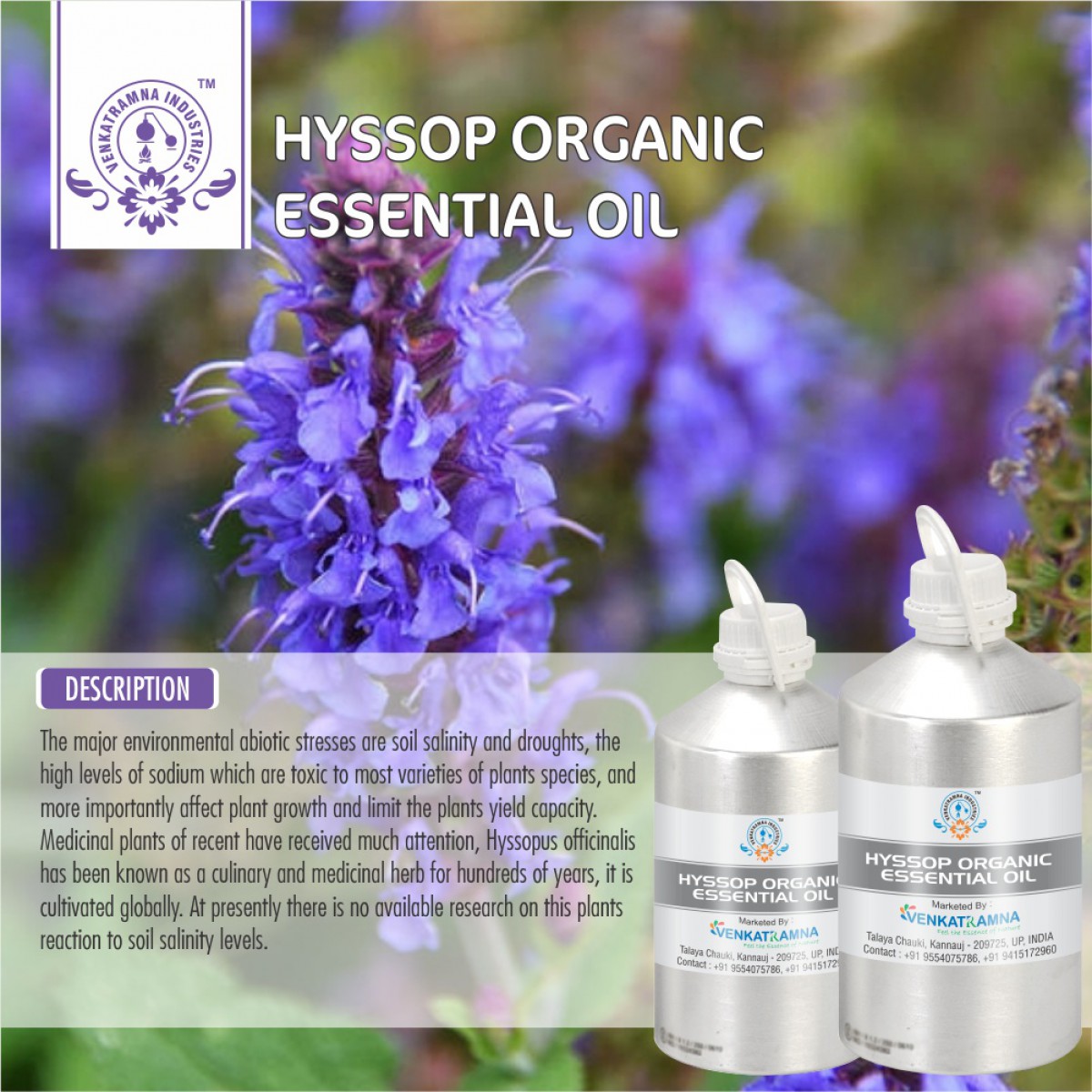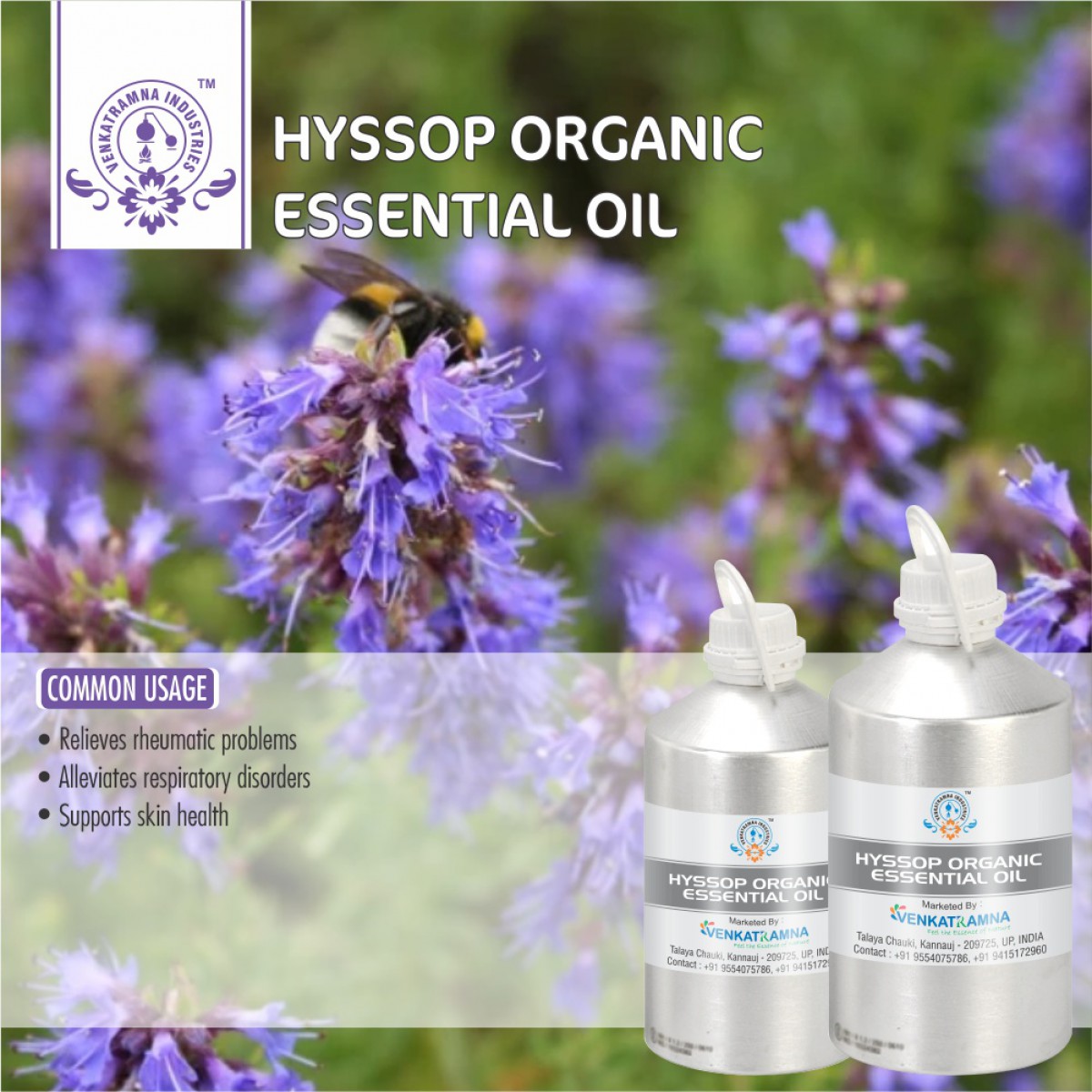Botanical Name: Hyssopus officinalis L Common name: hyssop Plant f Read More
|
Botanical Name: |
Hyssopus
officinalis L |
|
Common name: |
hyssop |
|
Plant family: |
Lamiaceae |
|
Genus: |
Hyssopus |
|
Appearance/Color: |
Thin liquid pale
yellow to yellow liquid |
|
Odor: |
Medium aroma with
pleasing medicinal scent |
|
Blends With: |
Eucalyptus,
ravensara, niaouli, cajeput and myrtle |
|
Origin: |
Spain |
|
Source: |
Aerial Parts |
|
Method of
Extraction: |
Steam Distillation |
Hyssopus
officinalis L is
a perennial plant, native to the Mediterranean region and was considered a holy
plant in biblical times. During the time of the Romans, this herb was used
against the plague, as a disinfectant and for treatment of minor infections.
The plant grows up to 2 feet high and has a “hairy” stem with small pointy
leaves and blue, purple or white flowers.
The
mild and gentle Hyssop essential oil is extracted by steam distilling the
aerial parts of Hyssopus
officinalis L.
flowers look similar to lavender and are staple folk medicine in Spain.
Once the stalks are cut, they are collected and dried either stacked on pallets to allow for draining or hung to dry. The actual drying process takes place in a cool, dry, well-ventilated area, where the materials are mixed several times to ensure even drying. Drying herbs are kept from exposure to the sun to prevent discoloration and oxidation. The drying process takes approximately six days in its entirety. Once dried, the leaves are removed and both components, leaves and flowers, are chopped finely. The final dried product weighs a third of the initial fresh weight and can be stored up to 18 months.
DISCLAIMER
The complete range of conditions
or methods of use are beyond our control therefore we do not assume any
responsibility and expressly disclaim any liability for any use of this
product. Information contained herein is believed to be true and accurate however,
all statements or suggestions are made without warranty, expressed or implied,
regarding accuracy of the information, the hazards connected with the use of
the material or the results to be obtained from the use thereof. Compliance
with all applicable federal, state, and local laws and local regulations
remains the responsibility of the user.
The FDA has not evaluated the
statements on this website. No claims are made by Venkatramna Industries as to
the medicinal value of any products from vriaroma.com or by us. The information
presented here is for educating our customers about the traditional uses of
essential oils and is not intended to diagnose, treat, cure, or prevent any
disease. You are responsible for understanding the safe application of these products.
If you have any questions, please call or email us for further information.
As per NAHA guidelines, New Directions Aromatics
(NDA) does not recommend the ingestion of essential oils. It is imperative to
consult a medical practitioner before using Essential Oils for therapeutic
purposes. Pregnant and nursing women and those taking prescription drugs are
especially advised not to use this product without the medical advice of a
physician. The oil should always be stored in an area that is inaccessible to
children, especially those under the age of 7.
In traditional medicine, Hyssop
Oils are used to stimulate
several body systems. It helps stimulate your digestive system for better
metabolism and nutrient absorption. It is used as stimulant to nervous,
endocrine, circulatory and excretory systems.
Hyssop organic Essential Oil in Pharma
Hyssop
organic Essential Oil regulates
blood pressure and calms down anxiety and hysteria. When applied on
wounds, it can help them from becoming infected. The essential oil can also
help wounds, cuts and bruises heal faster. Hyssop Essential Oil helps relieve pain and fatigue.
Essence
of Hyssop organic Essential
Oil
It
is often used on skin problems, such as insect bites, rashes, boils and even
(chicken) pox. It may even be used on scars to make them disappear quicker.
Hyssop
organic Essential Oil has
wide range of applications in aromatherapy to treat problems associated with
digestive systems.
COMMON USAGE
·
Expectorant
·
Carminative
·
Febrifuge
·
Hypertensive
·
Nervine Stimulant
·
Sudorific
·
Vermifuge
·
Vulnerary
Ingredients:
|
S.No |
Key Constituents |
Strength (%) |
|
1 |
Linalool |
48.0–51.7 |
|
2 |
1,8-Cineole |
12.3–14.9 |
|
3 |
(þ)-Limonene |
5.0–6.0 |
|
4 |
g-Pinene |
2.9–3.3 |
|
5 |
Caryophyllene oxide |
1.7–3.2 |
|
6 |
a-Pinene |
2.2–2.5 |
|
7 |
Camphene |
1.7–2.0 |
|
8 |
b-Myrcene |
1.3–1.7 |
|
9 |
Isopinocamphone |
1.0–1.5 |
|
10 |
b-Bourbonene |
1.0–1.2 |
|
11 |
Sabinene |
0.8–1.0 |
|
12 |
Pinocamphone |
0.5–1.0 |
TOXICOLOGICAL
INFORMATION
Safety Summary
·
Hazardous: Not known
·
Contraindications: not known
According to IFRA, essential oils
rich in linalool should only be used when the level of peroxides is kept to the
lowest practical value. The addition of antioxidants such as 0.1% BHT or
a-tocopherol at the time of production is recommended.
Organ-specific effects
·
Adverse skin reactions: No information
found. Oxidation products of linalool may be skin sensitizing, but 1,8- cineole
has antioxidant properties.
Systemic effects
·
Acute toxicity: No information found.
Neither linalool nor 1,8-cineole is toxic.
·
Carcinogenic/anticarcinogenic potential: No
information found. Neither linalool nor 1,8-cineoleis carcinogenic; (þ)-
limonene is antitumoral.
The very low content of Pino camphones means that this
chemotype of hyssop oil will not possess the kind of GABA receptor inhibitory
neurotoxicity normally associated with hyssop oils especially since linalool,
a-pinene and b-pinene potentiate GABA receptor mediated responses so would
counter pina camphone toxicity.
·
Germ cell mutagenicity: no data available
·
Reproductive toxicity: no data available
·
STOT single exposure: no data available
·
STOT repeated exposure: no data available
·
Phototoxicity: no data available
ECOLOGICAL
INFORMATION
·
Aquatic Toxicity: toxic to aquatic life with long lasting
effects
·
Bioaccumulation: No data available
·
Mobility in soil: No data available
·
Persistence and degradability: No data available
·
PBT and vPvB assessment: No data available
·
Other adverse effects: Do not allow it to enter
into water systems and marine environment.





 MSDS-Hyssop.pdf
MSDS-Hyssop.pdf




